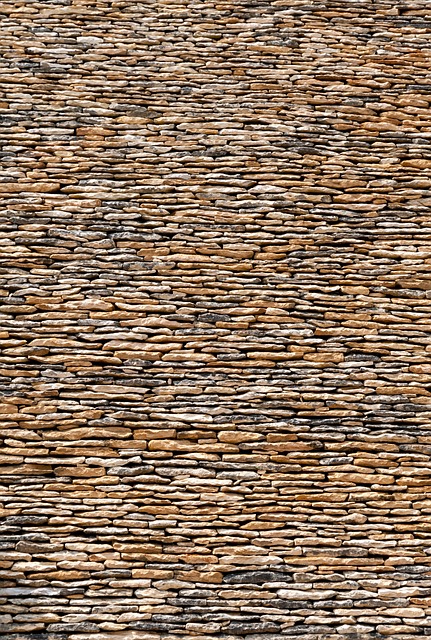Residential flat roofs are popular in modern architecture due to their sleek design, offering vast space, cost-effectiveness, and ease of maintenance. They come in various types, each with its advantages, such as easier access for maintenance, versatility for outdoor living, and longevity with proper care. Regular annual inspections, debris clearance, prompt issue resolution, and reapplication of roof sealant are vital for optimal performance and longevity. Common issues include leaks, water pooling, and cracks, requiring repair techniques like re-sealing, improved drainage, or membrane patching/replacement. Selecting experienced, reputable contractors is crucial for quality maintenance and repairs, ensuring the structural integrity and durability of residential flat roofs.
Maintaining a residential flat roof is essential for ensuring structural integrity, preventing costly repairs, and enhancing energy efficiency. This comprehensive guide delves into the world of professional flat roof maintenance, exploring various types and benefits of residential flat roofs. We provide a detailed checklist for regular upkeep, discuss common issues and repair techniques, and offer valuable tips for hiring reputable contractors. By understanding these aspects, homeowners can extend the lifespan of their flat roofs and avoid unexpected troubles.
- Understanding Residential Flat Roofs: Types and Benefits
- Regular Maintenance Checklist for Optimal Performance
- Common Issues and Repair Techniques for Flat Roofs
- Choosing the Right Professionals: Tips for Hiring a Reputable Contractor
Understanding Residential Flat Roofs: Types and Benefits
Residential flat roofs have become increasingly popular in modern architecture due to their sleek design and numerous benefits. These roofs, as the name suggests, are designed to be level and provide a vast, uninterrupted space on top of homes. Unlike traditional pitched roofs, they eliminate the need for steep angles and complex framing, making them both cost-effective and efficient in construction. There are several types of residential flat roofs, each with its own unique characteristics. One common type is the membrane roof, which involves installing a flexible waterproof material over a solid base, offering excellent protection against harsh weather conditions. Another variety is the green roof, which incorporates plants and vegetation, providing insulation, reducing energy costs, and contributing to environmental sustainability.
The advantages of residential flat roofs are extensive. They offer easier access for maintenance and repairs compared to traditional rooftops, making it more convenient for homeowners or property managers to inspect and address issues promptly. Additionally, these roofs provide a versatile space that can be transformed into outdoor living areas, gardens, or even solar panel installations, maximizing the functionality of the building’s top level. With proper care and regular maintenance, flat roofs can last for many years, ensuring a durable and reliable protection system for residential properties.
Regular Maintenance Checklist for Optimal Performance
Regular maintenance is key to ensuring your residential flat roof performs optimally and lasts for years to come. Here’s a quick guide to help homeowners stay on top of their roof care:
1. Inspection: Start by inspecting your roof at least twice a year, once in spring and once in fall. Look for any signs of damage, such as missing or damaged shingles, leaks, or loose flashing. Pay special attention to areas prone to water pooling, like valleys and joints.
2. Cleaning: Keep your flat roof clear of debris by sweeping it regularly. Remove leaves, branches, and other natural materials that can block gutters and drains, leading to water damage. Use a soft brush or vacuum attachment on your hose for gentle cleaning.
3. Repairs: Address any issues promptly. Small problems like cracked tiles or loose fasteners can grow into bigger, costlier repairs if left unchecked. Keep a supply of spare shingles and flashing handy for quick fixes.
4. Sealant Maintenance: Reapply roof sealant every few years to prevent leaks. Focus on areas around vents, pipes, and other penetrations. Ensure the sealant is compatible with your roof material.
5. Drainage Check: Verify that drainage systems, like gutters and downspouts, are clear and functioning correctly. Proper water flow is crucial for preventing water damage and roof deterioration.
Common Issues and Repair Techniques for Flat Roofs
Flat roofs, common in many residential buildings, require regular maintenance to prevent and address issues that can compromise their structural integrity. Some of the most prevalent problems include leaks, caused by damaged or missing shingles, flashing, or seams; ponding water, resulting from inadequate drainage systems; and cracks or deformities in the membrane due to age, UV exposure, or extreme weather conditions.
Repair techniques vary depending on the specific issue. Leaks often require replacing or re-sealing damaged components, while ponding water may necessitate installing better drainage systems. Cracks can be repaired by patching or replacing affected sections of the membrane. Regular inspections and prompt addressing of these issues are key to maintaining a functional and durable residential flat roof.
Choosing the Right Professionals: Tips for Hiring a Reputable Contractor
When it comes to maintaining or repairing your residential flat roof, choosing the right professionals is paramount. Look for a contractor with extensive experience in handling such structures, as they will have the necessary skills and tools to ensure a job well done. Check their reputation by reviewing online ratings and client feedback; this can give you valuable insights into their work ethic and quality of service.
Reputable contractors should offer comprehensive services tailored to your specific needs, whether it’s routine inspections, leak repairs, or full-scale replacements. Inquire about warranties on their work and materials used, as this provides additional peace of mind. Additionally, they should adhere to safety standards and use up-to-date techniques, especially for residential flat roofs, which require meticulous care due to their unique design.
Proper maintenance is key to ensuring the longevity and optimal performance of residential flat roofs. By regularly inspecting and addressing potential issues, homeowners can prevent costly repairs. Understanding the different types of flat roofs, their benefits, and common problems, as discussed in this article, equips you with valuable knowledge for effective maintenance. When necessary, hiring reputable professionals specializing in residential flat roofs will provide expert solutions tailored to your specific needs.
